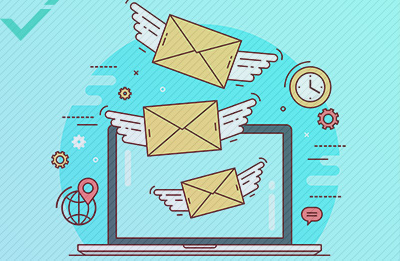Having to win back customers should not be seen as a sign that your small business or brand is performing poorly. Just like your company, the views and requirements of customers will change over time. The reason they initially signed up to your mailing list may not apply to them now. With this in mind, many businesses choose to adopt a re-engagement marketing strategy. A lack of e-mail open rates and engagement metrics aren’t the start of a downhill slope in performance; instead, win-back campaigns act as a means to reconnect with your customers. Just because they do not open your e-mails doesn’t mean those e-mails are ending up straight in the spam folder. The content may no longer be relevant, or your customers have forgotten about the diverse products or services you offer.
WHY RE-ENGAGEMENT E-MAILS MATTER TO YOUR BUSINESS
While many scenarios may well end in you removing disengaged users from your mailing list, re-engagement e-mails act as a final “Why don’t you see what we have to offer” before they may ultimately decide to unsubscribe. Re-engagement e-mails are crucial for businesses, regardless of their size. A re-engagement e-mail highlights a number of traits and values about your business to the customer; you have an interest in what they receive, you understand they may have changed, and you want to offer them something that puts them at the forefront of your business decisions. Marketing becomes more about the quality and relevance of the content than trying to achieve numbers through inbox saturation. Positive engagement numbers are great and essential, but they are achieved by understanding what your customer wants, rather than subjecting customers to what your business desires.

WHY CUSTOMER DISENGAGE
Establishing why customers become disengaged with mailing lists is the first step to working out how your re-engagement campaign should be launched. Look at your current mailing strategy and ask yourself these honest questions:
- Do we send too many e-mails or too frequently?
- Is the subject line catchy, or are they all the same?
- Are our e-mails easily viewed on a mobile device?
- Does the customer now fall outside of our target demographic?
All of the questions listed above could be the reason why your customers have become disengaged. If the answer to any of them is “yes”, a robust, bold re-engagement campaign will prove essential to reclaiming those uninterested customers.
PLANNING OUT YOUR RE-ENGAGEMENT STRATEGY
Before panic sets in and the marketing team start firing off hundreds of e-mails in a mad dash to improve engagement figures, a clear and concise strategy is needed. The objective doesn’t need to be complicated. If you plan to offer an incentive, how much can your company afford? Or do you have a means of testing how your e-mail is formatted when viewed on various mobile devices? Set three to four clear goals for your re-engagement campaign, with the intention of reviewing your performance after a pre-specified period of time. If you are struggling to come up with effective methods of getting your customer base interested, we have several techniques that can help.
EFFECTIVE TIPS FOR RE-ENGAGEMENT E-MAILS
HUMOUR AND PERSONALITY
You want to ask your customers why they may be choosing to unsubscribe, but not in a needy or defensive way. The theme and content of your re-engagement e-mail should show off the personality of your company, adding a human touch. Support the goal of your e-mail campaign by asking for a response from the customer. “What would you want to see more of to stay subscribed to our mailing list?”. Often, the reply may surprise you. Answers can be sectioned into multiple choice or funnelled through a questionnaire; the decision is yours.
SUBJECT LINE IS EVERYTHING
This is your business’ one chance to catch the customer’s eye, especially if they are hovering over that unsubscribe button. Review the last ten e-mails sent to subscribers. Did they all follow a similar format? Opt for something different, unique, and bold. The whole purpose of the campaign is to remind customers why they signed up in the first place.

KEEP IT SIMPLE
Less is more. If you are going to ask your customers to fill in a questionnaire, keep it brief. If you want to offer customers an exclusive discount, limit the number of offers to a few key deals. Content should be simple too; the purpose is to keep them on your mailing list, not to shoehorn in other new products or developments in your company.
INCENTIVISE
Nothing says “stay subscribed” like an exclusive offer. The offer still needs to be relevant to the customer, or as relevant as it can be based on their current mailing preferences. Other great ways to incentivise customers to stay subscribed include competitions, coupons, or promo codes that can be redeemed at a later date. It’s worth noting that using previous purchase history to recommend specific products customers may find useful is a powerful strategy.
SET CLEAR TIMESCALES AND BENCHMARKS
Similar to a regular e-mail campaign, set a clear timescale when it comes to waiting for a response. If customers haven’t opened your re-engagement e-mail after two or three months, a follow-up e-mail is recommended before finally removing them from the mailing list if no response is received at all. If you are running an exclusive competition through your re-engagement campaign, track competition sign-ups. These can go hand-in-hand with other statistics to see whether your effort has been worthwhile. Re-engagement campaigns are about reinvigorating customers and finding out what their current preferences are. Simple, bold content with a human touch will show that you are a business that wants to reconnect, without always using the hard sell.


